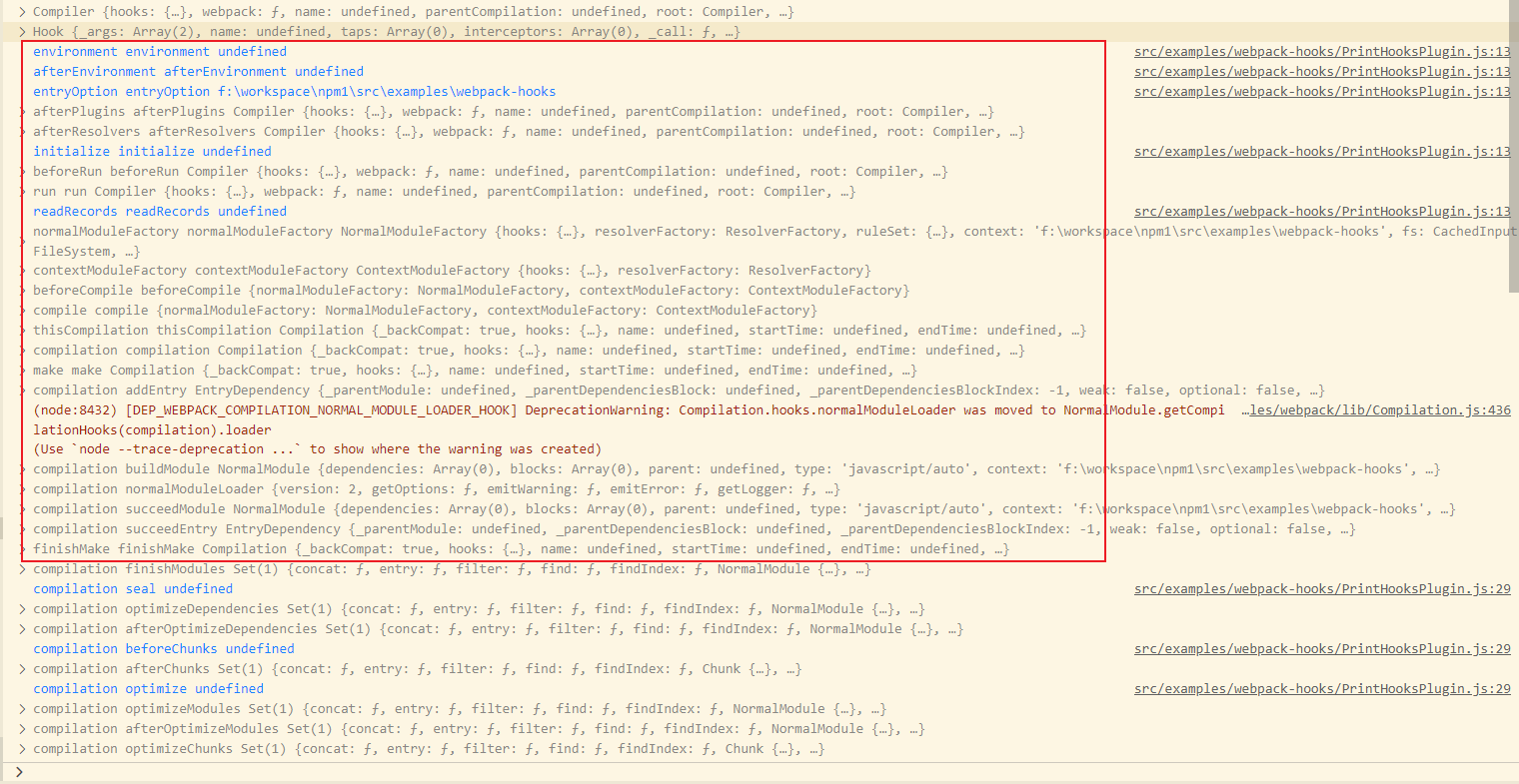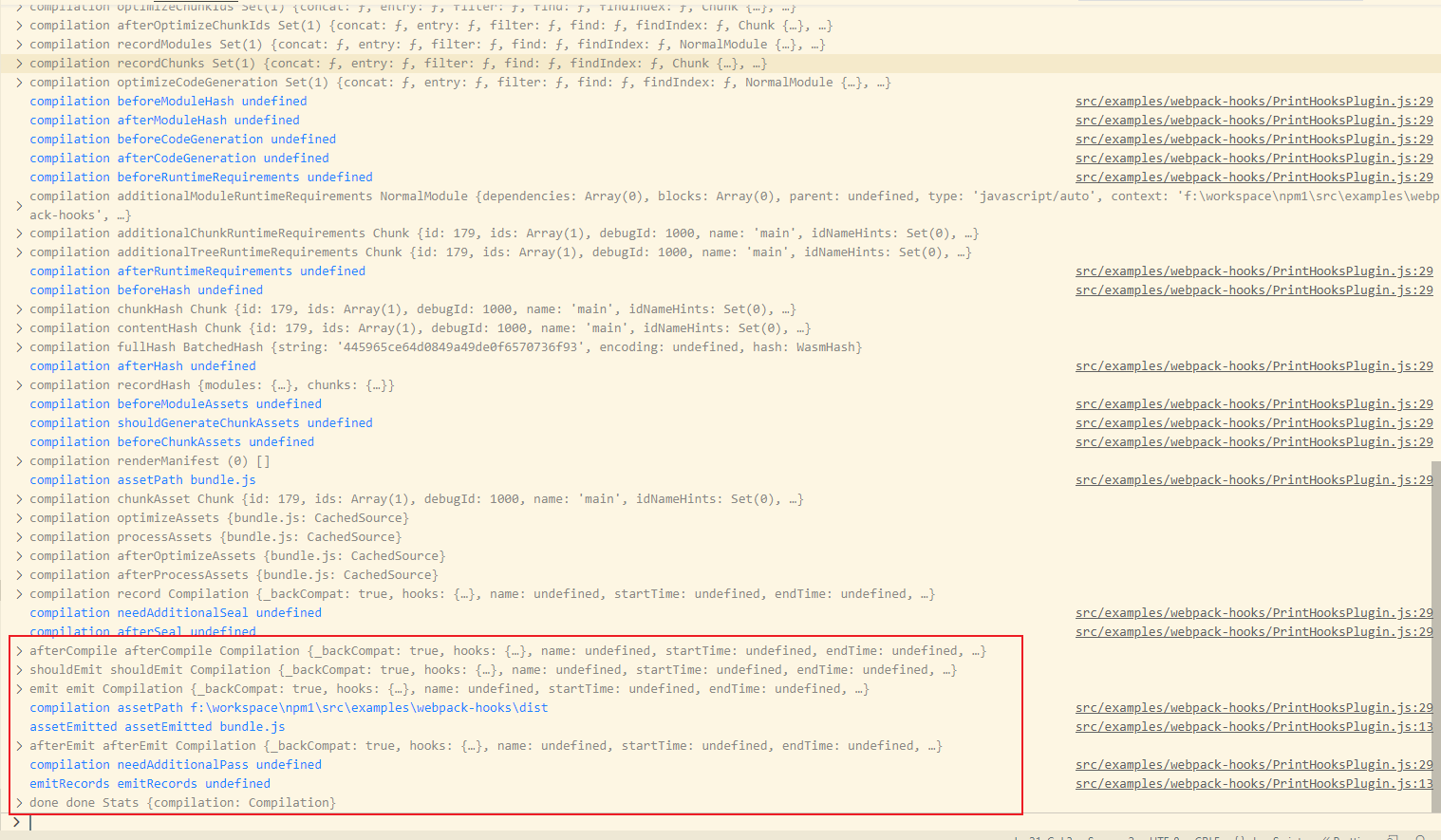- A+
所属分类:Web前端
背景
webpack构建过程中的hooks都有什么呢?除了在网上看一些文章,还可以通过更直接的办法,结合官方文档快速让你进入webpack的hook世界
写一个入口文件
//index.js const webpack = require("webpack"); const path = require("path"); const PrintHooksPlugin = require("./PrintHooksPlugin"); const config = { context: path.resolve(__dirname), mode: "production", optimization: { minimize: false, }, entry: "./main.js", target: ["web", "es5"], output: { filename: "bundle.js", path: path.resolve(__dirname, "dist"), }, plugins: [new PrintHooksPlugin()], }; const compiler = webpack(config); compiler.run((err, stats) => { debugger; }); //看下打印插件
//PrintHooksPlugin.js class PrintHooksPlugin { constructor() {} //打印编译器Hooks printCompilerHooks(compiler) { //打印编译对象 compiler.hooks.thisCompilation.tap("PrintHooksPlugin", (compilation) => { this.printCompilationHooks(compilation); }); //遍历compiler hooks Object.keys(compiler.hooks).forEach((hookName) => { compiler.hooks[hookName].tap("PrintHooksPlugin", (arg) => { console.log(`${hookName}`, hookName, arg); }); }); } //打印编译(构建)Hooks printCompilationHooks(compilation) { let compilationHooks = compilation.hooks; //这里添加一个正则对象,判断Hook结尾的 let reg = /Hook$/; Object.keys(compilationHooks).forEach((hookName) => { //获取hook函数名,判断以Hook结尾,并且不是log let name = compilationHooks[hookName].constructor.name; if (reg.test(name) && hookName !== "log") { compilationHooks[hookName].tap("PrintHooksPlugin", (arg) => { console.log(`compilation ${hookName}`, arg); }); } }); } //插件入口 apply(compiler) { console.log(compiler); console.log(compiler.hooks.thisCompilation); this.printCompilerHooks(compiler); } } module.exports = PrintHooksPlugin; //main.js !(function () { console.log('hello world'); })(); 结果
打印顺序就说明了生命周期的过程

截图不全,看一下后面的

总结
- 换一种方法学习webpack的生命周期,那个hook在文档上看不太明白,直接断点,看看处理前后数据结构的变化。结合插件的源码。不信你不会
- 我们主要掌握方法,除了书本的知识,还要结合实践




